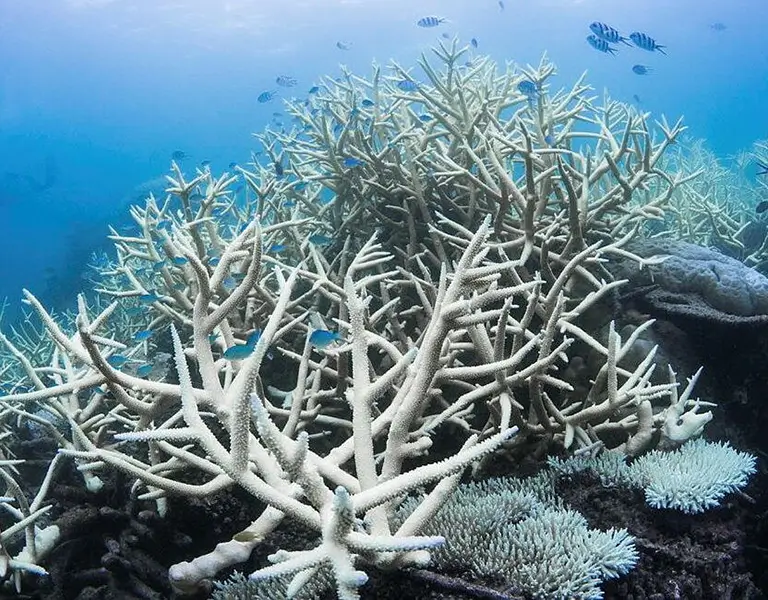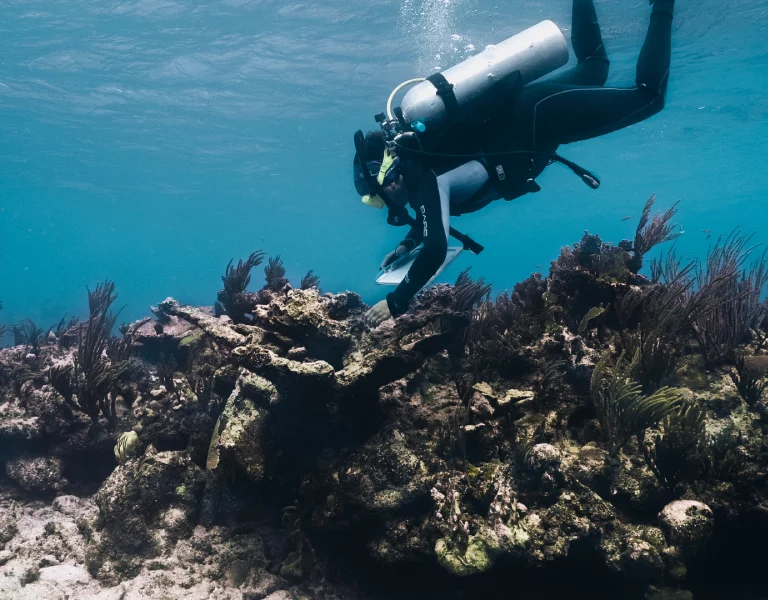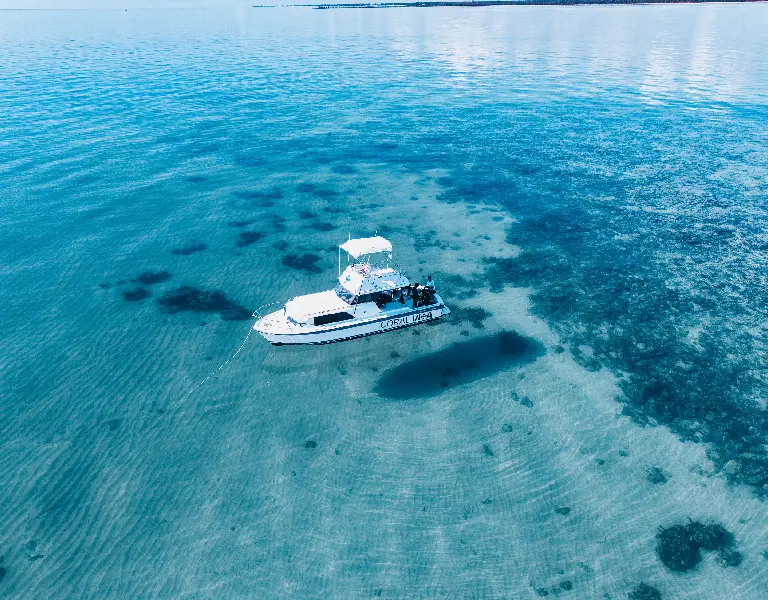Understanding what it means to be eco friendly has become essential as our planet faces unprecedented environmental challenges. From rising ocean temperatures threatening coral reefs to increasing carbon emissions impacting global ecosystems, the choices we make today shape the world we leave for future generations. This comprehensive guide explores the meaning of eco friendly practices, products, and behaviors that support environmental sustainability.
Key Takeaways
- Eco friendly choices reduce environmental impact by minimizing waste, conserving natural resources, and lowering carbon emissions
- 78% of global consumers consider environmental sustainability important, with sustainable products capturing 17% market share1
- Environmentally friendly practices include choosing recycled materials, reducing energy consumption, and supporting sustainable brands
- Ocean health and coral reef protection are integral to eco conscious living, as healthy marine ecosystems support global climate stability
- Small daily changes multiply into significant environmental protection when adopted collectively across communities. Eco Friendly gifts like adopting a coral can really start adding up to the collective mission.
What Is Eco Friendly: Understanding the Foundation of Sustainable Living

The term eco friendly refers to products, practices, and behaviors that minimize harm to the environment and natural ecosystems. Being eco friendly means making choices that reduce your carbon footprint, conserve natural resources, and protect environmental health for future generations.
This approach recognizes that human activities impact the natural environment in interconnected ways. When we burn fossil fuels, we increase greenhouse gas emissions that warm oceans and bleach coral reefs. Understanding these connections helps us make more sustainable choices in our daily life.
Why Being Eco Friendly Matters More Than Ever

At its core, being eco friendly involves three fundamental principles: reducing consumption, reusing materials, and recycling resources. These eco friendly practices minimize resource extraction and decrease the environmental impacts of our lifestyle choices. The sustainable products market has grown significantly, with consumers spending an estimated $217 billion on eco friendly products in 2025, representing 19.4% of American retail spending2.
The Federal Trade Commission provides guidelines for eco friendly claims to prevent greenwashing and ensure transparency. Authentic eco friendly approaches prioritize measurable environmental benefits over marketing tactics. This authenticity matters particularly for ocean conservation efforts, where organizations like Coral Vita demonstrate that eco friendly business models can restore damaged ecosystems while generating sustainable revenue.
Eco Friendly Products: Making Smarter Choices for Your Home and Planet

Eco friendly products are manufactured using sustainable materials and processes that reduce environmental harm throughout their life cycle. These products often incorporate recycled materials, sustainable materials, or renewable resources. From organic cotton clothing to bamboo toothbrushes, eco friendly alternative options now exist for nearly every consumer product category.
Research shows that 90% of consumers are more likely to purchase from brands with sustainable packaging3. This consumer demand drives innovation in eco friendly product design. Energy efficient appliances reduce electricity consumption while maintaining performance. Eco friendly cleaning products use natural ingredients instead of toxic chemicals that harm aquatic ecosystems when washed down drains.
The life cycle of eco friendly products considers environmental impact from raw materials extraction through manufacturing, use, and disposal. Durable products that last longer reduce waste and conserve resources by decreasing the frequency of replacement purchases. Recyclable products and recyclable packaging ensure materials can be repurposed rather than ending up in landfills or oceans.
Eco Friendly Practices: Simple Daily Habits That Create Lasting Change

Adopting eco friendly practices requires intentional choices across multiple aspects of daily living. These practices range from simple habit changes to more significant lifestyle adjustments. Water conservation through low flow faucets and mindful consumption reduces strain on water resources. Energy efficient behaviors like using LED bulbs and unplugging devices lower energy consumption and greenhouse gas emissions.
Sustainable practices in the workplace include implementing recycling programs, reducing paper usage, and choosing renewable energy sources. Many organizations are discovering that eco conscious practices also improve operational efficiency and reduce costs. Coral Vita exemplifies this approach by combining cutting-edge coral restoration technology with sustainable business practices that protect marine ecosystems while creating economic value4.
Transportation choices significantly impact your carbon footprint. Walking, cycling, carpooling, or using public transit reduces carbon dioxide emissions compared to solo driving. When vehicle use is necessary, electric vehicles powered by clean energy offer a more eco friendly alternative to traditional gasoline-powered cars.
The Bigger Picture: What It Means to Be Environmentally Friendly

The term environmentally friendly encompasses a broader perspective that considers entire ecosystems and interconnected environmental systems. Being environmentally friendly means recognizing how actions affect not just immediate surroundings but distant ecosystems like coral reefs, rainforests, and polar regions. Climate change demonstrates these global connections as greenhouse gases emitted anywhere affect ocean temperatures worldwide.
Over 80% of coral reefs worldwide have been affected by bleaching driven by warming ocean temperatures5. This devastating loss illustrates why environmentally friendly choices matter beyond local impact. When we reduce greenhouse gas emissions through sustainable lifestyle changes, we help stabilize ocean temperatures and protect marine biodiversity that supports hundreds of millions of people globally.
Developing Eco Conscious Practices: Mindful Living for a Healthier Planet
Eco conscious practices involve mindful awareness of how daily decisions affect environmental health. Reducing food waste by planning meals carefully and composting organic waste in a compost bin prevents methane emissions while creating nutrient-rich soil.
Shopping with reusable alternatives like cloth shopping bags and refillable water bottles eliminates single use plastics that pollute oceans. Studies show 54% of consumers consciously purchased products with sustainable packaging recently6.
Supporting businesses that demonstrate genuine environmental commitment amplifies individual impact. Companies practicing fair trade protect both workers and natural environments. Organizations like Coral Vita prove that profit and planet can align through innovation.
Protecting Our Oceans and Planet for Future Generations
The most compelling reason to embrace eco friendly living centers on preserving a healthy planet for future generations. Current projections indicate coral reefs could decline by 70-90% if global temperatures rise 1.5°C above pre-industrial levels, with a 99% decline at 2°C warming7. These losses would eliminate critical habitats supporting a quarter of all marine species, devastating communities dependent on reefs for food and protection.
Our children and grandchildren will inherit the consequences of today’s environmental choices. By adopting sustainable practices now, we create pathways toward a sustainable future where natural ecosystems thrive rather than struggle. This intergenerational responsibility motivates many to pursue eco friendly behaviors even when immediate personal benefits aren’t obvious.
Understanding Your Environmental Impact: From Products to Practices
Understanding environmental impact requires examining how human activities affect air quality, water resources, soil health, and biodiversity. Manufacturing processes consume raw materials and energy while generating waste. The journey from construction site to finished product involves significant environmental impacts.
Transportation accounts for substantial greenhouse gas emissions globally. Product packaging contributes to plastic waste that takes centuries to decompose, with 8 million metric tons entering oceans annually8. Individual actions collectively become powerful when directed toward sustainability.
Positive change emerges when we shift from linear consumption toward circular approaches that minimize waste. Choosing products with less packaging and supporting companies using recycled materials reduces environmental harm.
Making Eco Friendly Choices: Practical Steps Anyone Can Take Today
Making eco friendly choices becomes easier as sustainable options proliferate across product categories. Selecting toilet paper made from recycled content or bamboo saves trees while maintaining quality. Installing solar panels generates clean energy that reduces dependence on fossil fuels and lowers electricity bills over time. These eco friendly choices demonstrate that environmental responsibility and practical benefits often align.
Food choices represent powerful opportunities for environmental impact reduction. Plant-based meals typically require fewer resources and generate lower greenhouse gas emissions than meat-heavy diets. Buying locally grown produce reduces transportation emissions and supports regional sustainable agriculture. These dietary shifts contribute significantly to reducing environmental impact when adopted widely.
Personal care products offer numerous eco friendly alternatives. Natural ingredients replace harmful chemicals that damage aquatic ecosystems when washed into waterways. Refillable containers reduce plastic waste while products tested without animal cruelty align ethics with environmental consciousness. Small switches multiplied across millions of consumers drive significant market transformation.
Building Environmental Sustainability: Balancing Today’s Needs with Tomorrow’s Future
Environmental sustainability means meeting current needs without compromising the ability of future generations to meet theirs. This principle guides sustainable development initiatives worldwide. Annual global greenhouse gas emissions have increased 50% over the past 30 years, making urgent action critical9.
Sustainable choices in business operations demonstrate that profitability and environmental protection can coexist. Coral Vita’s operation grew over 100,000 corals across 52 species, proving restoration models can succeed commercially while healing ecosystems⁴.
Achieving environmental sustainability requires systemic changes alongside individual actions. Governments, businesses, and consumers working together accelerate progress toward a more sustainable world.
How to Become More Eco Conscious: Your Journey to Sustainable Living
Becoming more eco conscious involves continuous learning and gradual improvements rather than perfect immediate transformation. Start with manageable changes like reusable water bottles and shopping bags. As these habits solidify, expand to composting, buying secondhand, or reducing meat consumption.
Educational resources help identify opportunities in specific contexts. Understanding local recycling programs ensures proper waste disposal. Learning which products contain harmful substances enables informed purchasing. Discovering community initiatives connects individual action with collective environmental protection.
Technology facilitates sustainable living through carbon footprint tracking apps and platforms connecting consumers with green brands. Solar panel efficiency improvements and electric vehicle range extensions demonstrate how technological progress supports environmental goals.
The Life Cycle of Products: Why It Matters for Our Environment
Product life cycle analysis examines environmental impact from resource extraction through manufacturing, distribution, use, and disposal. Understanding these stages reveals hidden environmental costs and opportunities for improvement. Designing for minimal environmental harm across the entire life cycle matters more than just purchase considerations.
Raw materials sourcing impacts ecosystems where resources are harvested. Mining, logging, and petroleum extraction can devastate local environments. Manufacturers prioritizing sustainable materials sourced responsibly often use recycled materials that bypass extraction entirely. Sustainable materials like bamboo, hemp, and organic cotton offer renewable alternatives.
End-of-life disposal determines whether materials return productively to the economy or pollute environments. Designing products for recyclability ensures materials can be reprocessed. Biodegradable materials break down naturally without releasing harmful substances.
Living Earth Friendly: Honoring Our Planet’s Interconnected Systems

Earth friendly practices honor our planet as an interconnected system where actions ripple across ecosystems. Protecting forests regulates climate while providing habitat. Conserving wetlands filters water while sequestering carbon. Supporting ocean health through coral restoration protects biodiversity while safeguarding coastal communities.
Being earth friendly means considering environmental issues from global perspectives while acting locally. Climate change transcends borders, requiring coordinated responses alongside individual commitment. Reducing energy consumption contributes to global emissions reduction. Local actions aggregate into planetary impact.
The concept embraces indigenous wisdom about living harmoniously with nature. Traditional ecological knowledge emphasizes reciprocity and sustaining resources. Modern movements increasingly recognize these perspectives offer valuable guidance, blending traditional wisdom with scientific understanding.
Conclusion: Building a Sustainable Future Together
Understanding what eco friendly means empowers everyone to contribute meaningfully to environmental protection. Whether through selecting eco friendly products, adopting energy efficient practices, or supporting organizations restoring damaged ecosystems, countless opportunities exist for positive impact. The collective power of millions making sustainable choices drives market transformation and cultural shifts.
Our oceans face unprecedented challenges, with coral reefs serving as critical indicators of planetary health. Organizations like Coral Vita demonstrate that innovative eco friendly approaches can reverse ecosystem decline while creating economic value. By supporting coral restoration, reducing carbon emissions, and protecting marine habitats, we invest in both environmental health and human prosperity.
The journey toward comprehensive eco friendly living unfolds gradually through consistent small improvements. Begin with simple changes that fit your lifestyle, then expand as sustainable habits become natural. Every eco friendly choice reduces environmental harm and helps ensure future generations inherit a thriving planet.
About Coral Vita
Coral Vita is a mission-driven company dedicated to restoring our world’s dying and damaged reefs. Using innovative land-based farming techniques, Coral Vita grows diverse and resilient corals in months instead of the decades they take in nature. These corals are then transplanted into threatened reefs, helping to preserve ocean biodiversity while protecting coastal communities that depend on healthy reefs for protection, food, and income.
Founded by environmental entrepreneurs Sam Teicher and Gator Halpern, Coral Vita’s high-tech coral farms incorporate breakthrough methods to restore reefs in the most effective way possible. In 2021, the company was recognized as the inaugural winner of Prince’s William’s Revive Our Oceans Earthshot Prize Winner for their pioneering work in coral restoration.
To learn more about Coral Vita’s work or to get involved in coral reef conservation efforts, visit their website at www.coralvita.co or contact them directly through their Contact Us page.
Frequently Asked Questions
What does eco friendly mean in simple terms?
Eco friendly means making choices that minimize environmental harm and protect natural resources. This includes using sustainable products, reducing waste, conserving energy, and supporting practices that preserve ecosystems for future generations.
How can I be more eco friendly in daily life?
Start by reducing single-use plastics, conserving water and energy, recycling properly, and choosing sustainable products. Small changes like reusable bags, energy-efficient appliances, and mindful consumption collectively create significant environmental impact.
Are eco friendly products more expensive?
While some eco friendly products cost more upfront, many save money long-term through durability and efficiency. Additionally, as demand grows, prices increasingly match conventional alternatives. The environmental benefits justify investment for most consumers.
How do eco friendly choices help coral reefs?
Reducing carbon emissions slows ocean warming and acidification that causes coral bleaching. Using reef-safe sunscreen prevents harmful chemicals from damaging corals. Supporting ocean conservation organizations funds critical restoration work protecting marine ecosystems worldwide.
References
- https://theroundup.org/environmentally-conscious-consumer-statistics/ ↩︎
- https://capitaloneshopping.com/research/eco-conscious-consumer-statistics/ ↩︎
- https://www.shorr.com/resources/blog/sustainable-packaging-consumer-report/ ↩︎
- https://coralvita.co/in-the-press/coral-vita-raises-8m-series-a-led-by-builders-vision-impactalpha/ ↩︎
- https://icriforum.org/4gbe-2025/ ↩︎
- https://www.shorr.com/resources/blog/sustainable-packaging-consumer-report/ ↩︎
- https://science.nasa.gov/earth/climate-change/vanishing-corals-nasa-data-helps-track-coral-reefs/ ↩︎
- https://www.travelperk.com/blog/business-sustainability-statistics/ ↩︎
- https://www.arbor.eco/blog/sustainability-statistics ↩︎







